Medieval
Ficton
|
|
|
|
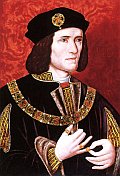
Richard III held the title of Duke of Gloucester from 1461 until
his accession in 1483
|
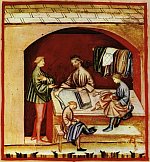
Silk
clothing in the Tacuinum Sanitatis (XIV century)
|
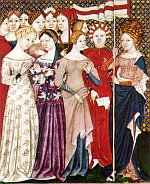
Illustration c. 1380 from an Italian breviary showing women's figured
silk gowns and a saint
|
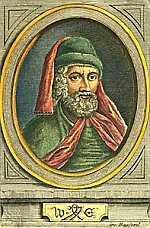
William
Caxton
English merchant, diplomat, writer and printer. First person to
introduce a printing press into England
|
|
Medieval
Book Reviews !
All
Things Medieval !
|
|
Figures in Silk
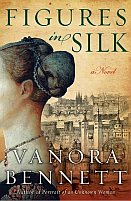
by
Vanora Bennett
Silk, women and political intrigue in
the late medieval world
Vanora Bennett's
FIGURES IN SILK
looks at the late Medieval world through the eyes of two sisters, the
daughters of silk merchant John Lambert. Their different
personalities govern the later choices they make. Beautiful,
extroverted and flirtatious, Jane makes her place within the court
whereas the more quiet and plainer Isabel longs for independence and
accomplishment. Bored with her marriage, Jane Shore becomes the
mistress of Edward IV and seemingly lives a pampered life of ease and
wealth thanks to royal favor. At first, Isabel feels an outsider
in her husband's family, the house of Claver, but when her husband
dies, Isabel joins forces with her mother-in-law Alice as an apprentice
in the silk trade. Earlier in the narrative, Isabel has a chance
encounter with a dark mysterious stranger whose words influence the
direction of her life, not only in the words he speaks but in her heart
as this stranger, later known to her as Dickson, or Richard the Duke of
Gloucester, becomes the focus of her love and passion. Isabel
takes more chances than her sister as she pursues a future in the silk
trade while not flaunting her love life or court connections as her
sister Jane. As the court power shifts, each sister faces
unexpected changes and challenges.
Set against the War of the Roses in the late 15th century, Vanora
Bennett's FIGURES IN SILK presents a captivating portrait of two
different women through the contrast of the court life of Jane Shore, a
woman whose affair with Edward IV is documented in history, and the
merchant life of Isabel Claver. Vanora Bennett details the
fascinating intricacies of the medieval silk trade from the varieties
of silk threads to the complicated alliances between England and the
Lombard silk merchants. In characterization, Vanora Bennett is at
her best in her protrayal of he relationship between Alice Claver and
Isabel and later Isabel and the other silk workers. Here,
history, economics and personal interactions and aspirations all merge
to create a narrative that sheds light into a lesser known area of
history and the lives of historical women. With her sense of
independence, innovation and determination, Isabel makes for the most
intriguing of the two sisters. Through Isabel, the reader views
Richard III through a unique prism. Deeply in love with her
Dickson, Isabel is a woman who also feels compassion for others.
Her love depends on her being able to deny the rumors of his political
maneuvering. New events force Isabel to tackle not only her
passion but also the rumors about his nefarious actions.
FIGURES IN SILK is a fast paced work of historical fiction.
Although the author evokes many intricate details of the silk trade,
the novel presupposes some knowledge of the political intrigue of the
period. Little time is given in the novel to clue readers new to
the period into all the more subtle background of the court. For
readers familiar with the period, this lack of detail heightens the
drama as the novel progresses. One waits in anticipation
for the unfolding of events about to occur, not knowing exactly how the
pieces will come together but sure in the knowledge that change is
around the next page. Lovers of late medieval literature, like
myself, will take a special delight in seeing William Caxton appear as
a character, not only for the additional historical connections to this
great figure in literary history (Records show William Caxton as
apprenticed to a silk mercer at an early age) but also just to see him
as more than a side comment in a work of historical fiction. For
me personally, this part of the novel was a welcome surprise and pure
reading fun.
FIGURES IN SILK has much to recommend it to lovers of the period and
historical fiction in general. The prose reads easily with enough
of a modern tone to appeal to those unfamiliar with the period (and
lovers of the period who are not phased by the fictional element of
historical fiction). Some sections are quite lyrical or
beautifully perceptive in the view of human relationships. The
contrast between the two sisters presents two different viewpoints of
the period. Vanora Bennett's fictional imagination focuses on the
lives of strong women in this period giving a look beyond the blanket
stereotypes often attributed to medieval times. All the aspects
of the silk trade and its connection to different alliances both
economic and political is educational and suspenseful within the
context of the novel. Given the depth of Isabel's love for
Richard III in the novel, more development of their relationship would
have made her passion more believable, especially since in other areas,
her character has more independence and spunk. Perhaps, the
contrast itself and the changes within her make for a more
multi-layered character in Isabel but more space given to Jane's
character and the emotional relationship between Isabel and Dickson as
it develops would make FIGURES IN SILK a great memorable read.
Publisher: William Morrow (March 2009)
Review courtesy of Amazon Vine
|

|